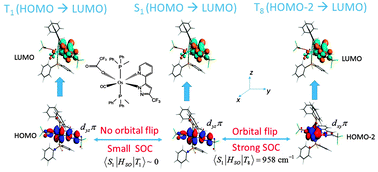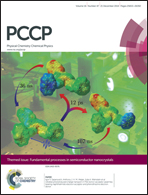Semi-quantitative assessment of the intersystem crossing rate: an extension of the El-Sayed rule to the emissive transition metal complexes†
Abstract
The main goal of this study is to provide systematic elucidation of the parameters that influence S → T intersystem crossing (ISC). Particular attention is paid to: (i) the computation of Sn → Tm spin–orbit coupling strength based on a non-adiabatic approach, (ii) crucial factors that facilitate ISC, such as the atomic number, ligand structure, and particularly the types of electronic transition, (iii) formulating a discussion on the standpoints of the fundamental photophysical theory. Combining the theoretical and empirical approaches, we then make semi-quantitative assessment of the ISC rate for certain representative transition metal (TM) complexes, the results of which allow us to develop a set of empirical rules that harness ISC for organometallics analogous to El-Sayed's rule for the classic organic compounds. We therefore present a critical and timely theoretical approach with the results matching quantitatively the experimental data, which serves as a prototype to access the photophysics of TM complexes in a facile and precise manner beneficial to researchers in the field of optoelectronics.


 Please wait while we load your content...
Please wait while we load your content...